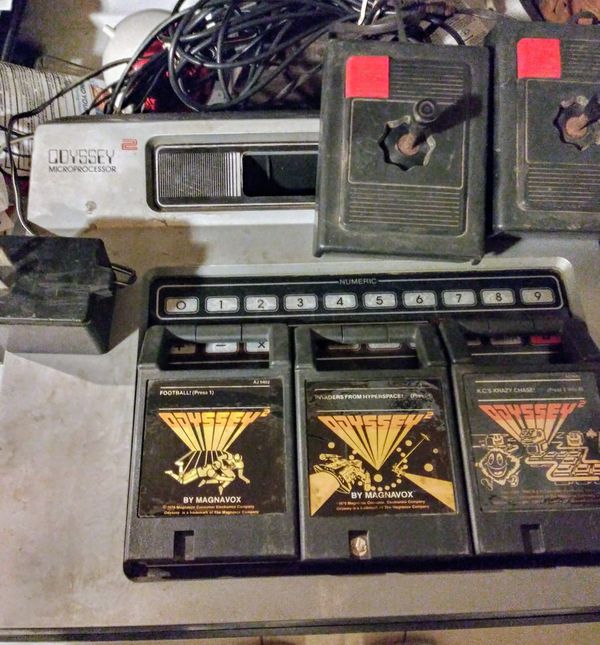

Among the highest rated games for this console are Pick Axe Pete, K.C's Krazy Chase, K. If you are a first time visitor to the Odyssey2, be prepared for blocky graphics and simple games. All games produced by Magnavox/Philips ended with an exclamation point, such as K.C. To sell would-be customers on its technical abilities as a computer-based console, the Odyssey² was marketed with phrases such as "The Ultimate Computer Video Game System", "Sync-Sound Action", "True-Reality Synthesization", "On-Screen Digital Readouts" and "a serious educational tool" on the packaging for the console and its game cartridges.

Finally, in 1983 the two Imagic games were brought to the US. The lack of third-party support kept the number of new games very limited, but the success of the Philips Videopac G7000 overseas led to two other companies producing games for it: Parker Brothers released Popeye, Frogger, Q* Bert and Super Cobra, while Imagic released versions of their hit games Demon Attack and Atlantis. Even without third-party developers, by 1983 over one million Odyssey² units were sold in the US alone. The Odyssey² sold moderately well in the US. In 1978, Magnavox, now a subsidiary of North American Philips, released the Odyssey², its new second-generation video game console. They succeeded in bringing the first home video game system to market, the Odyssey, which was quickly followed by a number of later models, each with a few technological improvements (Magnavox Odyssey Series). In the early 1970s, Magnavox was an innovator in the home video game industry. Nintendo's first venture into the console world was selling the Magnavox Odyssey in Japan, before they made their own consoles.The Magnavox Odyssey², known in Europe as the Philips Videopac G7000, in Brazil as the Philips Odyssey, in the United States as the Magnavox Odyssey² and the Philips Odyssey², and also by many other names, is a video game console released in 1978. Magnavox would later try releasing another video game console, the Odyssey 2, in 1978. Ralph Baer went on to invent the classic electronic game Simon for Mattel in 1979, which became the most popular electronic handheld of all time.
#Magnavox odyssey gameplay tv#
This detected light from the TV screen, however pointing the gun at a nearby light bulb also registered as a "hit". The Odyssey was successful enough to support an add-on peripheral, a "light gun". Magnavox did win a court case against Nolan Bushnell for patent infringement in Bushnell's design of Computer Space, as it somewhat resembled the games for the Odyssey. The Odyssey was released in 1972 but was a commercial failure. It also came with plastic game tokens and score sheets to help keep score, much like more traditional board games. The system also came with plastic overlays that gamers could put on their TV screen to simulate the playing of different "games," but only two TV sizes were supported. The Odyssey used a type of removable circuit card that inserted into a slot similar to a cartridge slot. The Odyssey and its successor are the only consoles that lack sound capability. Unlike all later video game consoles, the Odyssey is analog rather than digital, which makes its invention all the more amazing in spite of its rather crude graphics and controller responsiveness. This prototype is affectionately known as the "Brown Box" to classic video game hobbyists. The Odyssey was designed by Ralph Baer, who had a working prototype finished by 1968. The Magnavox Odyssey was the first home video game console, predating the Atari Pong home consoles by three years.


 0 kommentar(er)
0 kommentar(er)
